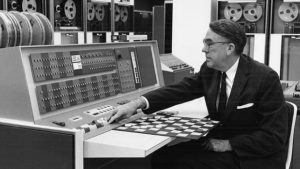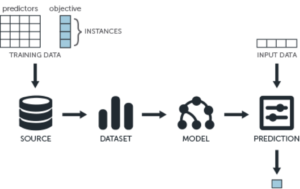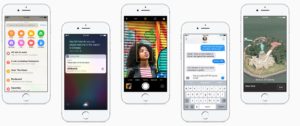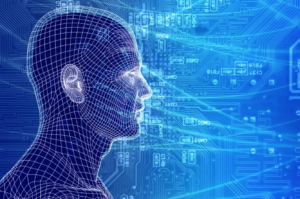What is Machine Learning?
Machine learning up until recently, has only been present in internet-based computing; better known as the cloud. 2017 has seen many advances in machine learning with tech companies such as Google, Apple and even Facebook all having introduced some form of machine learning framework directly into mobile devices. These announcements come as the importance of AI increases; companies are simply aiming to make AI faster and more powerful across all devices.
The possible outcomes of this technology are endless; this is where the self-driving Google car originated from, it’s also what personalises your Netflix and Facebook news feed according to your online behaviour by using statistical and predictive analysis. Artificial Intelligence also allows your device to perform related actions on the basis of recognising facial expressions as well as gestures. A well known example of this is ‘filters’ such as those featured on social media platforms like Snapchat and Instagram. The features are activated via facial recognition and perform various activities in response to actions from the user such as opening their mouth or raising their eyebrows.
The History of Machine Learning
Machine learning algorithms are not a recent advancement; they have been around for quite some time now with mention in Greek mythology of mechanical men designed to mimic that of human behavior.
- The first advancement of machine learning was in the 1950’s wherein Arthur Samuel had the realization that it may be possible to teach computers to learn about the world for themselves, rather than having to teach them everything they know. Through a knowledge-driven approach he also created the first computer learning program which learned to play, and eventually win games of checkers.
- In the 90’s machine learning saw a shift to a data-driven approach where scientists enabled computers to ‘learn’ from the results of analysing and drawing conclusions from large amounts of data.
- It wasn’t until the increase of digital information that followed the emergence of the Internet did the ability to code computers and machines to think like human beings seem possible.
The key to allowing computers to understand the world in the same way we do? Neural networks- a system that can be taught to recognise and classify information in the same way the human brain does.
So what exactly is machine learning?
Machine learning is a data analysis tool that stems from the desire to no longer need to teach computers in order for them to perform complex tasks. Instead people are building systems that provide computers with the ability find hidden insights without being directly programmed where to look. This allows them to learn to do tasks such as facial recognition and language translations solely by themselves- with the help of a deep neural network algorithm of course which enables them to independently adapt after being exposed to new data. After being exposed to such data, the system works on probability and is then able to make statements and decisions. These algorithms can either be supervised algorithms which apply what has been learnt in the past to new data, or unsupervised algorithms which draw conclusions from the collection of data.
Machine learning applications have endless uses including identifying whether text written is a complaint, identify which emotion a piece of music is likely to make the listener feel, communicating with voice recognition as you would with any other human or using facial recognition to organise your photo library; and is designed to mimic the actions of neuron connections in the brain, recognising common patterns by searching through large amounts of data. Upon detecting patterns within the data, machine learning then adjusts its program actions accordingly.
Programs like these are usually tricky to run, take up a lot of processing power and more often than not require a web connection to work; with new advances tech companies such as Google, Apple and Facebook have managed to find a way to make them work locally on your mobile device.
Google, Apple and even Facebook are optimising the technology
This year Google announced a mobile optimized version of TensorFlow. Google’s David Burke stated that it is essentially “a library for apps, designed to be fast and small, but still enabling state-of-the-art techniques.” TensorFlow was initially made available in November 2015 as a way for researchers and developers to build AI tools. With recent improvements that enable it to run accross multiple machines it can now make improving systems faster, making them smarter along the way. TensorFlow is not a unique one-off system however and there are alternative systems out there such as that offered by Apple.
Apple introduced and encouraged you to take advantage of CoreML which can be used across all Apple products including the iPhone, iPad and Watch, enabling developers to build apps with intelligent features.
Even Facebook has implemented it’s own version in November 2016 called Caffe2Go, which enabled the social platform to allow its users to overlay photos, videos and live broadcasts with AI-powered art filters of various artistic styles. All of these sysems have been implemented as a way to help smooth the mobile AI experience.
Why put AI directly onto your phone you ask?
The answer is simple, by allowing machine learning applications to run locally on your device it allows them to be faster without the need to be connected to the Internet, and most importantly the data never leaves your personal device increasing your privacy. Using machine learning not only creates a more user-friendly experience, but it also tailors that experience to each individual user according to their previous data patterns. An example of this in action is the food discovery App Feedmee, one of the first to use an artificial intelligence as a tool for business. Named Olly, the AI is uses and individuals ‘taste preferences’ to recommend restaurants and meals they’re more likely to enjoy based on meals previously favourited or purchased through the app.
How does machine learning differ from Artificial Intelligence?
In the conversation of technological change, big data and analytics Machine Learning often gets thrown around with the term Artificial Intelligence however, they are not quite the same thing. In the simplest way to explain the difference, machine learning stems from or is an application of AI, which allows machines to be ‘smart’ in the way they carry out tasks by allowing them to learn for themselves from data they have been exposed to.
Machine learning brings upon as greater change to the tech world as the introduction of the Internet, Greg Corado, a senior research scientist at google suggested that just like the early days of the internet “It [will end] up being something that everybody can do a little of. They don’t have to do the detailed things, but they need to understand ‘well, wait a minute, maybe we could do this if we had data to learn from.’”
Machine learning is in an incredible place right now in that every major machine learning software can be used and modified for free; meaning that with enough dedication and a laptop with an internet connection you could set up a simple intelligence for yourself. Not to take credit away from the task, as anything deeper than a simplified intelligence is still incredibly complex and is typically reserved for those with a background in coding. It can however, be assumed that the further into the future we go the closer we get to this tool being something everyone can do.





